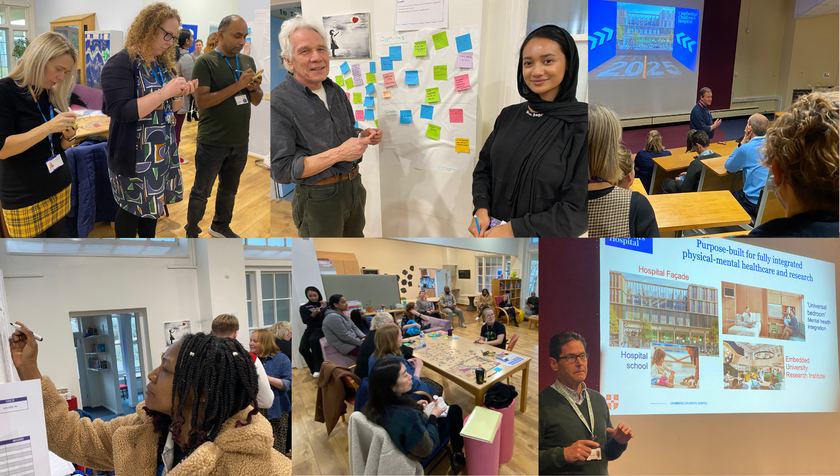An overview of feedback on what will make Cambridge Children's Hospital a great place to work and receive care.

Introduction
People are at the heart of the vision for Cambridge Children’s Hospital. We are ambitious about developing a culture and ways of working with staff across our partner organisations to deliver on the vision of providing care for the whole child at the new hospital.
We call this ‘organisational development’, which is a structured way of thinking about change and bringing together our partner organisations to:
- Support the integration of physical and mental healthcare, and research
- Enable the development of a single identity and culture for Cambridge Children’s Hospital
- Enhance our collective ability to transform how we do things for the benefit of patients and staff
- Support us to achieve the important benefits of Cambridge Children’s Hospital as outlined to Government in our Full Business Case
Watch our video explainer about the feedback from the Organisational Development focus groups. There are short videos contained in the key themes section, below
Link: https://youtu.be/yERzFR_Z0ic
What we’ve done so far
From November 2024 to March 2025, we worked with a company called NLC Ltd and spent significant time speaking with, and listening to, staff. We asked about the opportunities they are excited about, what their concerns are and invited them to share their ideas about how to improve both patient care and staff experience in the new Cambridge Children’s Hospital.
Through focus groups, interviews with senior leaders and bespoke sessions, we talked to people from CUH, CPFT, University of Cambridge and Pilgrim Pathways School. We also met with members of our Young Adult Forum and Parent Carer Voice to understand their perspectives on creating a positive culture for everyone connected to the hospital. In total we spoke to nearly 150 people. A huge thank you to everyone who was involved and shared their thoughts and ideas – your input has been incredibly valuable.
What we learnt
The findings from the work so far have been collated into themes, which are outlined below. You can look at our Staff FAQs for the answers to some of the questions raised.
What’s next
Thank you to everyone who was involved in the focus groups, interviews, or have shared their ideas and feedback in other ways. All of the valuable feedback has shaped our Organisational Development programme for the coming months and years. We have a range of things planned to make the most of the opportunities and address the questions and concerns that people have shared with us. We really want to work with staff in all roles to help us create a children’s hospital that will be a great place to work and an excellent place to receive healthcare.
Get in touch
Questions or ideas? We’d love to hear from you! Please email us at cuh.cambridgechildrens@nhs.net
